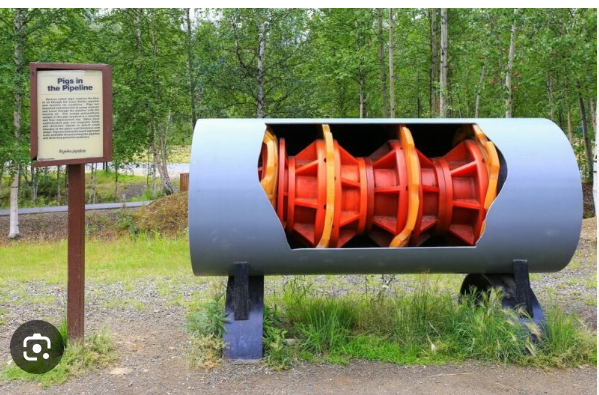
Exploring the Applications of Pigging Systems in Pipelines
Introduction to Pigging System Applications
Pipeline systems are integral to industries ranging from oil and gas to food processing and chemicals, ensuring the efficient and safe transportation of materials over vast distances. Maintaining these pipelines is crucial to prevent disruptions, safety issues, and operational inefficiencies. One of the most effective ways to maintain pipelines is through the use of pigging systems. These systems utilize specialized devices known as pigs to perform a variety of tasks that contribute to pipeline optimization and upkeep.
Pigging system applications are versatile and provide solutions for cleaning, inspecting, separating products, managing pressure, and more. This article explores the numerous applications of pigging systems, explaining how they are used to keep pipelines running smoothly while ensuring that industry standards are met.
What is a Pigging System?
A pigging system refers to the equipment and process that utilizes a device called a “pig” to carry out specific tasks within a pipeline. These pigs are propelled by the fluid in the pipeline or by mechanical means, traveling through the pipeline and performing a variety of functions. The term “pig” is thought to have originated from the squealing pigging system applications noise early models of pigs used to make, although modern pigs are much quieter and more sophisticated.
Pigging systems are typically employed in pipelines used for transporting liquids, gases, and other materials. They can serve multiple purposes.
Key Applications of Pigging Systems
Pigging systems have a broad range of applications in various industries. Below, we explore the most common uses of pigging technology.
- Pipeline Cleaning
The most prevalent use of pigging systems is for pipeline cleaning. Over time, pipelines accumulate various forms of debris such as rust, wax, sludge, and other build-ups that can impede the flow of materials, cause blockages, or even lead to pipeline damage. Cleaning pigs are designed to remove these unwanted materials, restoring the pipeline to its optimal operating condition.
Cleaning pigs come in different types, each designed for a specific cleaning task:
- Brush Pigs: Equipped with bristles that scrub the inside of the pipeline, removing debris and deposits.
- Scraper Pigs: These pigs have scrapers that physically remove solid matter from the pipeline.
- Foam Pigs: Typically used for lighter cleaning tasks and to clear the pipeline of minor residue.
Benefits of Pipeline Cleaning Using Pigging Systems:
- Increased Flow Efficiency: Regular cleaning ensures that the pipeline operates at maximum capacity, preventing material build-up that could restrict flow.
- Longer Pipeline Lifespan: Cleaning prevents corrosion and wear, extending the life of the pipeline.
- Lower Maintenance Costs: Proactive cleaning reduces the need for expensive repairs or replacements caused by blockages or build-ups.
- Inspection and Monitoring
Regular inspection is essential for maintaining pipeline integrity. Pigging systems equipped with advanced inspection tools are used to identify issues such as corrosion, cracks, and leaks that might not be detectable by traditional methods.
Inspection pigs are fitted with a variety of sensors and devices to monitor the condition of the pipeline:
- Ultrasonic Sensors: Used to detect corrosion and measure wall thickness.
- Magnetic Flux Leakage (MFL): Detects flaws such as pitting or cracks in the pipeline.
- Cameras: High-resolution cameras allow for visual inspection of the pipeline’s internal surface.
Benefits of Inspection Using Pigging Systems:
- Early Detection of Issues: Inspecting the pipeline regularly helps detect small issues that could escalate into major problems if left unaddressed.
- Cost-Effective Monitoring: Automated inspection through pigging systems is less expensive than manually inspecting pipelines.
- Improved Safety: Early detection of cracks or leaks helps prevent safety hazards such as explosions or environmental contamination.
- Product Separation
Many pipelines are designed to transport more than one product. Product separation is critical to avoid contamination between different materials, especially in industries like oil and gas, chemicals, and food processing. Pigging systems are used to separate these products and ensure that they don’t mix.
The pigging system helps in:
- Batching: Moving different products sequentially through the same pipeline without mixing.
- Maintaining Quality: Prevents the contamination of products, ensuring each product’s purity remains intact.
- Efficiency: Allows multiple products to be transported through a single pipeline, optimizing the use of infrastructure.
Benefits of Product Separation with Pigging Systems:
- Maintained Product Integrity: Keeps different products separated, maintaining their quality and preventing costly cross-contamination.
- Improved Operational Efficiency: Multiple products can be transported through a single pipeline, reducing operational complexity.
- Reduced Wastage: Reduces product wastage due to contamination, helping companies save money and resources.
- Pressure Management and Flow Regulation
Maintaining pipeline pressure is essential to prevent pipeline ruptures or underperformance. Changes in pressure can occur for various reasons, such as temperature fluctuations, material composition, or flow rate variations. Pigging systems help in regulating and managing pressure to ensure consistent flow.
- Pressure Relief: Some pigs are designed to manage excess pressure in the pipeline by facilitating its release.
- Flow Rate Regulation: In some systems, pigs are used to optimize the flow rate and balance the pressure within the pipeline.
Benefits of Pressure Management Using Pigging Systems:
- Prevents Over-Pressurization: Pressure regulation ensures the pipeline remains safe and operates within its designed parameters.
- Enhanced Flow Control: Pigging helps in maintaining a steady flow of materials, ensuring operational efficiency.
- Increased Safety: Proper pressure management reduces the risk of pipeline ruptures or dangerous pressure surges.
- Wax and Hydrate Removal
Conclusion
Pigging systems applications are vital for the effective operation and maintenance of pipelines across various industries. From cleaning and inspection to pressure management and product separation, pigging systems provide critical services that enhance pipeline performance, safety, and longevity. As technology continues to advance, pigging systems are becoming more sophisticated, offering even greater benefits for pipeline operators. By leveraging pigging systems, industries can ensure the smooth and efficient transportation of materials, while minimizing downtime, reducing costs, and enhancing safety.



